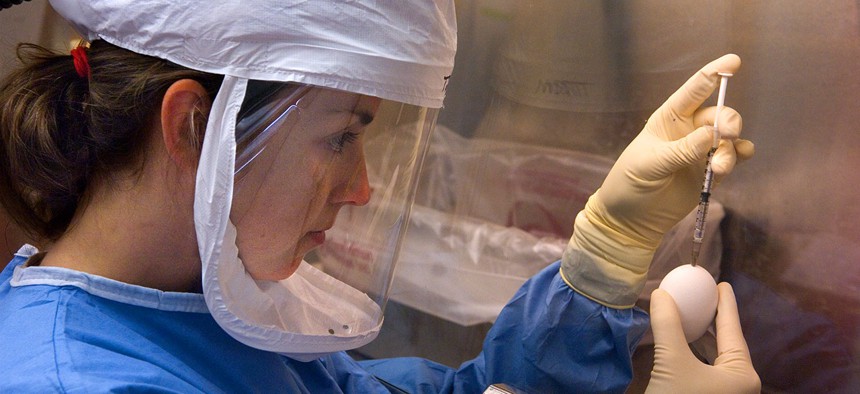CDC Makes Modest Progress in Improving Lab Safety
Expert panel calls for further management changes to avoid contamination.
A year and a half after a scare from possible laboratory exposure to anthrax, bird flu and small pox, the Centers for Disease Control and Prevention has demonstrated some safety improvements, but further management improvements are needed, an outside expert panel found.
In a report dated Oct. 29 but released on Monday, the Atlanta-based agency was credited with having launched governance and safety reforms to achieve consistency. Progress has been slowed, however, by employee ambivalence on reporting, staff shortages and weak training, the assessment said.
“Not all CDC staff are yet engaged in developing a 'CDC Way,' " said the follow-up report by the External Laboratory Safety Workgroup, in reference to a 2014 recommendation by internal and external experts that leaders establish a CDC brand and communicate, from the top down, the staffwide need for “performance of responsible science practiced in a consistently safe manner.”
The response rate to a second staff survey on safety was “disappointingly low,” it added. “There is still some apprehension about the possibility of retribution if staff, especially contractors, report accidents or safety concerns….There is also the sense from some staff that a significant portion of the CDC reaction to the accidents has been in the form of increased paperwork and that signing a form does not necessarily lead to a fundamental improvement in safety culture.”
Efforts to monitor handling of dangerous substances using cameras may appear to some staff to be less desirable than a “two-man process.” The advisory panel also warned that “risk assessments of proposed research activities are either not being done in a standardized manner or are not being done at all.”
Following interviews, the outside experts noted that “morale has suffered in the last year because of these events and the public response to them. CDC needs to actively engage with external media. CDC should better articulate to the public the rationale for the laboratory work that CDC does to protect the public health.”
CDC leaders were credited for appointing a biomedical scientist in the director’s office to lead the safety reforms in labs (Dr. Steve Monroe is onboard as the associate director for laboratory science and safety, assisted by a deputy, with Dr. Leslie Dauphin).
The agency also obtained an additional $7.25 million in fiscal 2015 to support such priorities as lab safety, and has requested an increase in the budget up to $20 million.
The agency’s website points out that ongoing efforts to improve lab safety include:
- Continuing engagement with the external safety workgroup to enhance best practices;
- Expanding biosafety training, including a complete review of the current biosafety training to revise and update the current curriculum;
- Conducting a search of some 1,000 rooms of lab-related space to ensure proper storage of select agents;
- Revamping and implementing new and enhanced procedures for prompt reporting of laboratory incidents to CDC leadership and staff; and,
- Establishing a recognition program for CDC employees who demonstrate above-and-beyond efforts to improve laboratory safety.
“Laboratory safety cannot be achieved by a single set of standards or methods,” the agency said. “Acceptable work practices in one lab may not be suitable for another lab and may expose workers to risk if used in another lab.” It added that “laboratory work is critical, difficult, and can never be without risk.”




